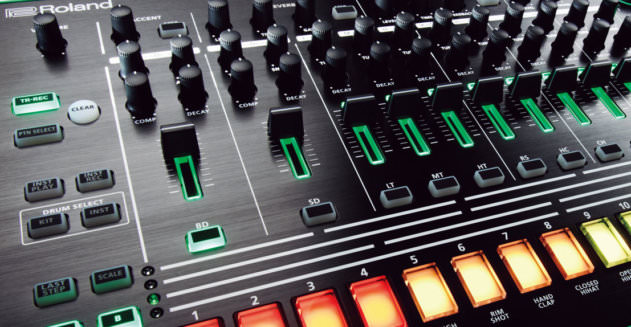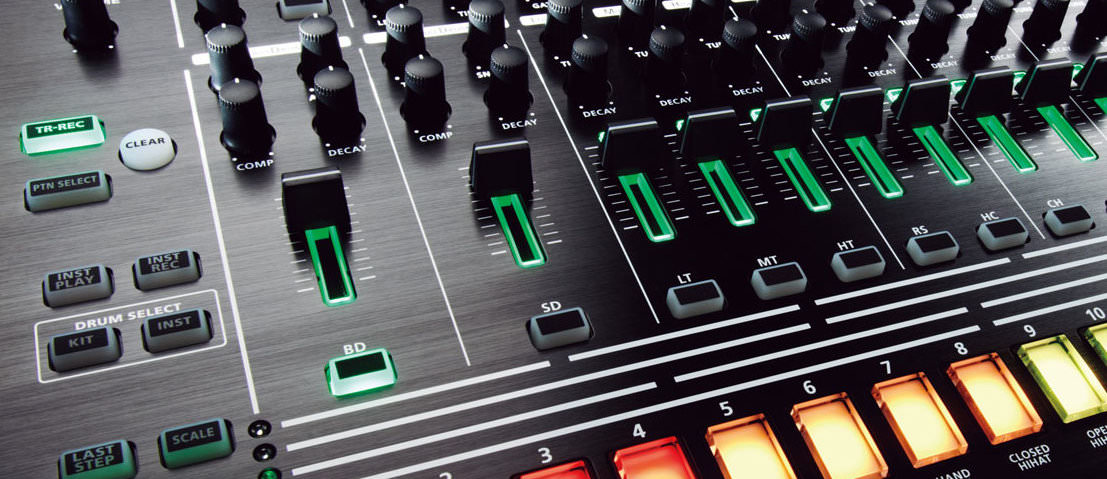We take a look back at developments in music tech over the last 12 months and consider how they reflect trends in music production and DJing.

Hardware
If the biggest music tech news in 2013 was the introduction of the Korg Volca series, there’s no doubt that Korg’s old rivals Roland stole the show in 2014 with the announcement of the AIRA range. First rumoured in January, the prospect of reissued classics from Roland had most of us salivating.
When details of the AIRA range did finally emerge, the response was, to put it politely, mixed. Many felt that Roland had made a huge mistake by modelling the originals using digital emulations rather than using analogue circuits.
Once we’d all come to terms with the fact that the AIRAs weren’t analogue and got over the shock of Roland’s audacity in updating the TB-303, TR-808 and TR-909 concepts, it turned out that the TR-8 was an excellent drum machine and the TB-3 was an interesting update of the 303 concept (even if the purists will probably still be more satisfied with the Cyclone Analogic TT-303).
As Thomas Cox pointed out in his Attack column on ‘the gear myth’ earlier this year, music shouldn’t be judged on the equipment used to make it. The analogue versus digital debate (if it can even be described as such) has been tiresome for at least a decade now. Yes, there are differences, but the end result is what matters. At this point most of us are probably fed up with music being marketed and judged based on the technology used to create it rather than how it actually sounds, but we’re still seeing the crossover effect in terms of products hitting the market, so producers can be forgiven for still getting excited about the arrival of affordable new instruments.
The music tech market often lags behind developments in the music scene itself; products take time to develop, so in 2014 we’ve seen manufacturers playing catch-up with the budget analogue revival that kicked off in earnest with the release of synths like the Arturia MiniBrute nearly three years ago.
The downside is that the hype isn’t always justified. Nowhere was this more obvious than with the curious case of the Akai Rhythm Wolf drum machine, unveiled at the MusikMesse trade show back in March. Before we’d heard so much as a single kick drum from the retro-styled unit, hype was building and pre-orders were being placed. When the unit finally hit the stores a couple of months ago, the response was much more muted. In some cases, they were downright scathing.
The Rhythm Wolf is by no means completely terrible, but it’s a sign of how far we’ve come over the last couple of years that people could be disappointed with a £149 analogue drum machine. We’re living in a golden age of affordable hardware, with an unprecedented range of options from the most basic DIY projects to affordable synths such as the Arturia MicroBrute, mid-range options like the DSI Mopho, money-no-object Moogs and sprawling modular setups.
manufacturers are still playing catch-up with the budget analogue revival that kicked off in earnest with the release of synths like the Arturia MiniBrute nearly three years ago.
It’s the latter which provided one of the biggest success stories in music gear over the last year. If you aren’t already into modular gear you’d be forgiven for underestimating the incredible growth of the modular scene since this time last year. Modular synths are no longer on the way back; they are back. Just a few years ago it was still quite unusual to find modular gear in most producers’ studios; take a look at a few of our My Studio features today and you’ll find small Eurorack setups living happily alongside software and non-modular hardware in countless producers’ studios. (It’s also perhaps evidence of the resurgence of interest in modular gear that our ‘Dreaming Of Wires’ feature from nearly two years ago remains one of the most read articles on the site.)
The sheer number of new Eurorack-format modules released in 2014 was incredible, but so was the fact that the majority of them were truly innovative and original in some way. There are parallels in the world of software development, but it’s hard to recall a period of such widespread innovation in music hardware by amateur and semi-professional engineers. You’d probably have to go back to the late 1960s and early 70s, when the likes of Bob Moog, Tom Oberheim, Alan R Pearlman, Don Buchla and Dave Smith were all making the leap from students and hobbyists to electronic music icons. Whether the Eurorack modular scene will launch the careers of any equally influential engineers, it’s hard to say, but there’s no doubt that some of the most exciting work is being carried out not in the multi-million-dollar R&D departments of major companies but in garages and spare bedrooms around the world.

05.10 PM
Nice overview – I think there may be a couple words missing in the third paragraph though: “…and the TB-3 was an interesting (even if the purists will probably still be more satisfied with the Cyclone Analogic TT-303).”
05.12 PM
Thanks Dan. Fixed!
05.21 AM
Great work.